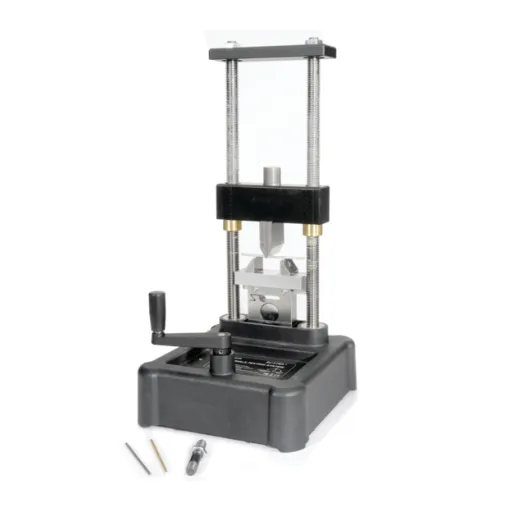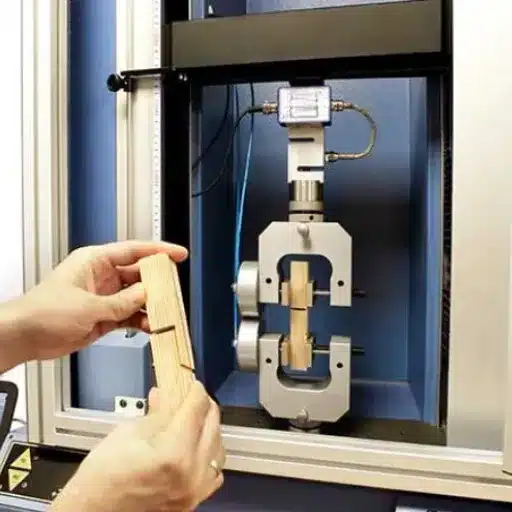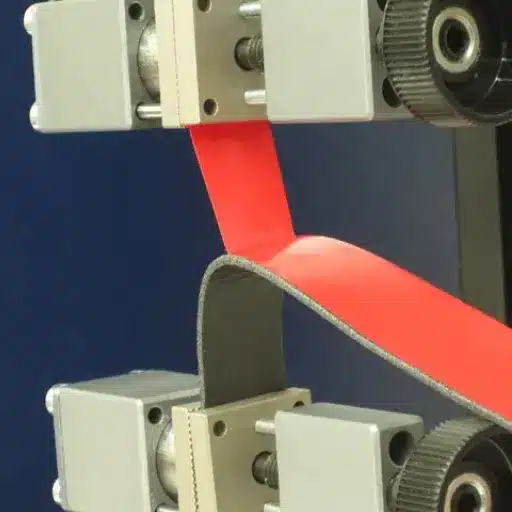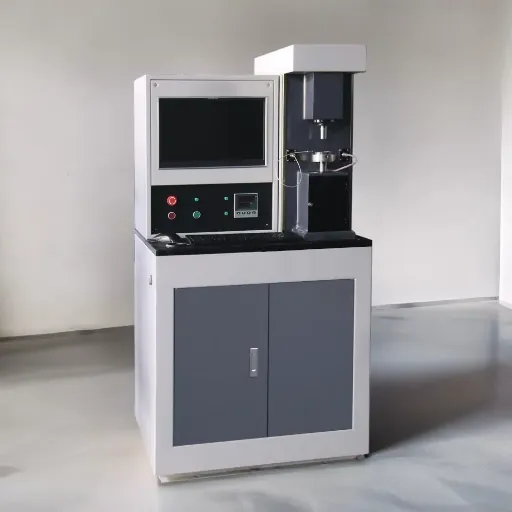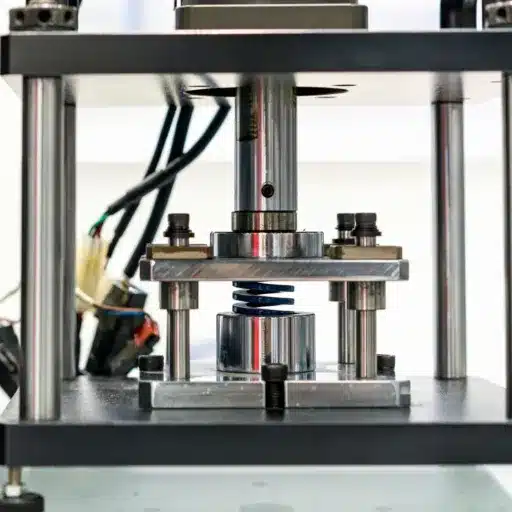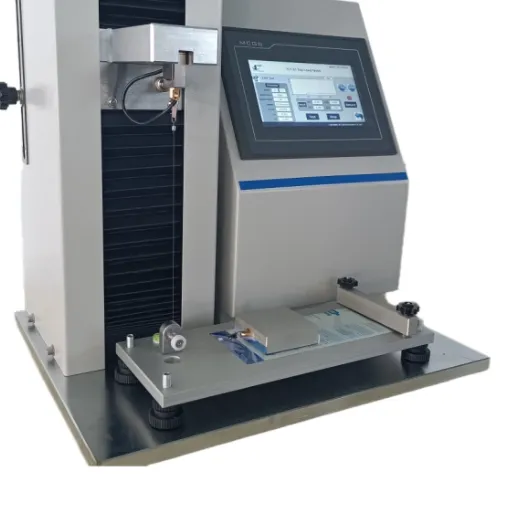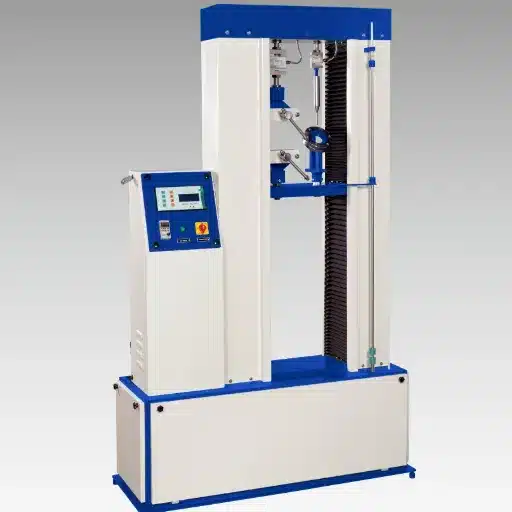Material properties related to performance and resistance are taken into consideration by domains such as structural and aerospace. A bend test machine is one of the important experimental tools used to perform 3-point bending tests, among others. The present article discusses bending tests and gives clarifications on bending test machines and their applications: why these tests form the basis for measuring the strength and flexibility of materials. Whether you are considering the fundamentals of 3-point bending or are weighing the pros and cons regarding the purchase of a bending testing machine, this guide will add to your pool of knowledge and provide direction. So stay around as we take a look at the science, technology, and societal influence of this novel type of testing.
Understanding Bending Testing Machines
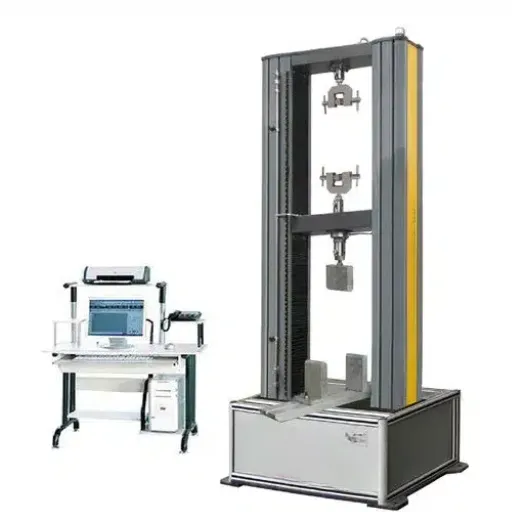
What is a Bending Testing Machine?
A bending testing machine is thus identified for its ability to determine the flexural strength and flexibility of materials by subjecting them to precisely controlled bending forces. These machines are necessary for testing how materials behave under forces that bend them and are vital in the determination of mechanical parameters of components across different industries, including construction, manufacturing, and aerospace.
They apply force upon a material sample, for instance, in the form of a beam, rod, or sheet, and measure its reaction. The 3-point or 4-point methods are ordinarily employed, wherein forces are exerted at certain points along the material. The data obtained reveal the material’s capability to bend or resist tensile forces, its elasticity, breakability, and, lastly, the suitability for the intended use.
Bending testing machines are crucial for quality and safety in products and infrastructure. These devices assist engineers and manufacturers in material limits so failures do not occur; they do so by designing structures that are bound to strict regulations on safety and durability. Providing accurate and repeatable results, the bending machines are indispensable to materials analysis and development.
Importance of Bending Tests in Material Analysis
Bending tests are indispensable to know the material behavior under applied stress and strain. Such tests measure the flexibility, strength, or ability of the material to perform without breaking or permanent deformation. By studying how materials behave upon bending, a manufacturer could assess how suitable a material is for a given application, thereby safeguarding the interests of both safety and regulatory standards.
Such tests will also indicate a material’s limits in elastic and plastic deformation and may also prospectively find weak points, thus requiring further attention during the development stage. Such information is vital to programs wherein design failure under load could produce a perilous situation. Bending strength-wise, the materials would enable products that last.
The bending tests have, in addition, supported the development and improvement of materials. After evaluating materials and comparing their performances under laboratory conditions, one may optimize material composition and structural identity depending on the results. This results in the manufacture of stronger materials, which are more resistant to erosion-mediated damage that may meet those engineering requirements of today. In a nutshell, bending testing machines have been at the forefront of developments and in assuring the safety and quality of materials in innumerable areas.
Overview of 3 Point Bending Test Methodology
These tests are most widely used to characterize the materials concerning strength and flexural properties under applied stress. A sample is placed on two support points, while the test machine applies the load at the midpoint of the span. The load is then increased till the specimen bends with deformation or fractures. Engineers use 3-point bending tests to determine the important features, namely flexural strength, modulus of elasticity, and behavior of materials under loading conditions.
During the test, the setup subjects the specimen to simultaneous tensile and compressive forces. The area below the centre of loading is under compression, while the lower face of the material is placed under tension. Such a force distribution is going to tell much about the ability of the material to withstand stresses and the existence of possible weak points. The simplicity and reliability of the method make it an often-chosen approach for quality control and minor research in construction, manufacturing, and aerospace.
Data coming forth from the 3-point bending test is used to check the safety, durability, and performance of materials when used under demanding applications. In other words, this testing procedure can establish their limitations and what kind of stresses they can withstand, after which designers would change the materials or make structural changes to suit a particular engineering purpose. The process is what an industry has to rely on while building efficient and durable materials, hence lending even more importance to bending testing machines of today in the world of material science.
Pricing Trends of Bending Testing Machines

Factors Influencing Bending Testing Machine Prices
Key Price Factors:
- Technical Specifications: Load capacity, test precision, and digital control systems
- Build Quality: High-grade components and excellent finish
- Versatility: Ability to test wide range of materials and support complex standards
- Safety Features: Advanced safety protocols and ease of use
The price of bending testing machines depends mainly on technical specifications and features. Generally, the higher the load capacity and test precision of a machine and the more digital and advanced the control system, the more expensive it is to buy. Also, machines that can test a wide line of materials or support complex test standards tend to go for higher prices because of their level of versatility and engineering.
Another factor worth considering is the material and build finish used in making the machine. Models with excellent build finishing made with high-grade components are generally more expensive and guarantee longevity with reliable performance. Safety features and ease of use further add up to the price of a machine, yet may prove worthwhile in the long term for the end user.
Price changes are affected by some market forces on the supply of raw materials, manufacturing costs, and demand in some industries. Regions with active industrial activity may experience a price rise because of the high level of demand, activities include construction or manufacturing hubs. In contrast, an emerging market might random cheaper prices because of local manufacturing or even an aggressive pricing policy. Buyers willing to study these aspects would definitely better understand their purchasing decisions.
Comparative Analysis of Bending Testing Machine Prices Over Time
Prices of machines for bending tests have considerably fluctuated over time, due to a few major factors. One main cause of change in price is the advancement of technology. Machines with newer technology usually cost more at the outset, considering newer levels of functionality, precision, and performance. For example, those with digital connectivity or automatic control are typically far more expensive than manual versions. However, once certain technologies gain widespread acceptance and have become widely set standards, their costs generally go down.
Another important factor is the global supply chain. A disruption, say for instance, scarcity of raw materials like steel or electronic components, could temporarily drive prices up. Furthermore, labor and energy costs in manufacturing regions furnish the major criteria for calculating the production costs of machines. Whenever labor and energy costs see an upward move, prices of machines do the same: manufacturers raise prices correspondingly, passing the extra costs on to buyers. Apart from that, increased manufacturing in cost-effective regions will, of course, contribute to lowering prices.
Finally, price keeping in view the competition has a vital role in this regard. Typically, high competition implies high pricing competition in regions or industries having more manufacturers. Seasonal sales or discounts are another thing that affects the price, as manufacturers would want to clear their inventory or entice new customers. Thus, a buyer looking for a bending testing machine must consider these, along with his specific requirements to be able to make an informed choice and pay a reasonable price.
Case Studies: Pricing Variations by Manufacturer
Case studies show pricing variations for bending testing machines depending on several factors. Manufacturers in more competitive regions charge comparatively lower prices for their products because they must engage in aggressive pricing to maintain their market share. In other words, prices in less competitive areas are high because products are considered exclusive or niche. Basing a price on geographic locations of production and target markets is of utmost importance.
Another key variation arises from the level of customization offered by manufacturers. Machines tailored to meet specific industry needs or customer requirements will have a higher price, varying by way of components and engineering that are specialized engineering. Standard types, on the contrary, are more affordably priced and are rather universal in character. These differences point to the crucial consideration of operational needs so that you will not be drawn into paying for specifications you do not need.
Finally, certain manufacturers are also offering long-term warranties, technical support, and installation assistance as part of their pricing. These added services add to the camera value but also of course add to the up-front cost. Comparatively, manufacturers that sell just the machine with no additional services typically discount the price a little but expect buyers to incur costs later. Comparing these would allow one to weigh cost versus value in the selection of a bending testing machine.
Top Manufacturers of Bending Testing Machines

Leading Brands and Their Market Reputation
Across most industries, these bending testing machines are considered indispensable tools, making it a good market to be in for major manufacturers. These companies manufacture and sell high-quality test machines, ensuring that the industry standards are strictly met and that tests are accurately performed in a repeatable fashion. The market reputation of such manufacturers is a direct result of years upon years of consistent performance, technical innovation, and customer satisfaction.
The top-of-the-line brands in this sector distinguish themselves by offering custom-tailored solutions for their application needs. These machines must test all varieties of materials: metals, plastics, and composites with great accuracy into their flexibility, strength, and durability. From a marketing point of view, manufacturers with big presence back their products with strong customer support, extended warranties, and service contracts that provide great value back to the end consumer.
The reputation of these brands thus finds further backing from adherence to testing standards of international repute, allowing their machinery to be used across various industries, such as construction, aerospace, and automotive. The buyers usually want to invest in brands that are up to date with technology, can perform well with reliability, and adhere to any quality certification analyses. This enduring association with a trusted testing house guarantees machines that will serve for testing well for the first few years, but will warrant support, maintenance, and repairs going forward. Hence, the machines become an investment for the buyer.
Comparison of Product Offerings from Major Manufacturers
| Feature Category | Basic Models | Advanced Models |
|---|---|---|
| Force Range | Low to medium capacity | High-capacity testing capabilities |
| Control System | Manual operation | Digital connectivity & automatic control |
| Test Parameters | Fixed settings | Programmable test parameters |
| Standards Compliance | Basic standards | ASTM, ISO, and custom standards |
Bending testing machines find uses in industries to find the ability of the material to withstand bending forces under different conditions. There can be variations offered by the manufacturers of these bending testing machines, depending upon the needs, starting from very basic manual ones to high-tech automatic ones. Selection will mostly depend upon the type of material, application, and more importantly, the level of precision desired.
The force range to be exerted by the machines is another common parameter of comparison. Most of the leading manufacturers supply machines capable of low- and high-capacity testing, able to work with delicate parts as well as industrial materials. An important feature is the setting up of the test procedures. More specialized models offer programmable test parameters, which means these machines can carry out tests to specific applications as per the standards preferred by ASTM or ISO.
Durability and maintainability are equally imperative considerations in comparing the offerings. Reliable bending test machines last long, having designs that are sturdy and with spare parts that are readily available in case of repairs. Manufacturers with after-sales support that includes training, calibration, and maintenance gain a marked advantage. Buyers may consider these factors to choose the machine apt for their operational and material testing requirements.
Customer Reviews and Feedback on Top Test Machines
Top Rated Features by Users:
- Reliability & Accuracy: Consistent and precise results
- Ease of Operation: User-friendly instructions and controls
- Durability: Sturdy design reducing downtime
- Versatility: Handle multiple material types and test cases
Customers have consistently regarded reliability and accuracy as the principal assets of every bending testing machine. A majority of users expressed that they are pleased with machines that give consistent and accurate results, which are crucial for material quality assurance and meeting industry standards. In their feedback, end-users often stress that good instructions and easy operations are really the most important elements, making the machines accessible to operators of varying levels of experience.
Users also praise durability as it curtails operational downtime and, in turn, maintenance costs. Buyers often state that for an investment to have improved long-term value, the machine needs to be sturdy in design, and the parts must be available for easy replacement and repair. Other important factors in the ownership experience include after-sales support, training, and prompt customer service.
Other reviews stress versatility, where users are on about machines that can handle many kinds of materials and test cases. Another frequently praised aspect is the flexibility of customization to suit the required specifications for testing. Above all else, these insights stress the necessity of having a bending testing machine for operation-specific need fulfillment, bearing reliability over time.
Key Features to Look for in a Bending Testing Machine
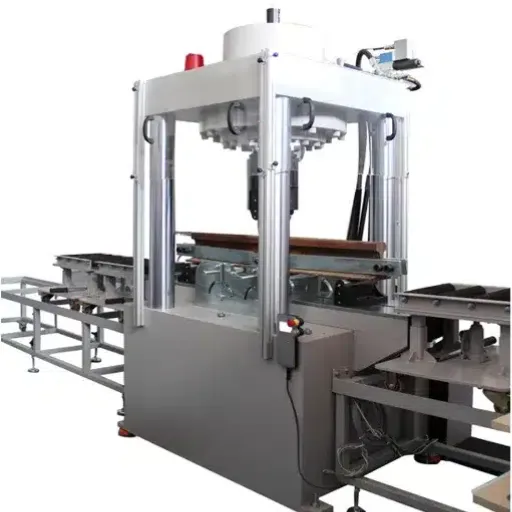
Essential Specifications for Effective Bending Tests
Measurement Accuracy
High-resolution sensors for precise force and deformation measurements ensuring reliable test data.
Loading Capacity
Adjustable load ranges to accommodate various material types from delicate to industrial-grade.
User Interface
Easy-to-use controls and setup procedures that reduce operational errors and improve efficiency.
While selecting a bending testing machine, it must have a very accurate and precise means of measuring force and deformation. The presence of high-resolution sensors is a must for any efficient machine, so as to guarantee trustworthy data from tests. Another factor is the capacity of the machine to maintain constant results and allow some variations in conditions, and thereby maintain the consistency of material testing under conceivable different applications.
Another specification is the loading capacity of the machine, which must withstand the full range of forces that are required for the kind of material being tested, whether metals or plastics, or composites. Adjustable load ranges in the machines give the advantage of flexibility and ease of operation to adapt to a specific testing scenario. Also, the testing apparatus should be able to accept different sizes and shapes of materials without affecting the accuracy of the results.
Finally, user ease and operational reliability are the main considerations. An easy interface assists testing setup and operation and reduces errors, thus improving efficiency. When built reliably with durable parts, the machines operate consistently, even under heavy usage. Such specifications assure meeting test and operational requirements while offering high performance and long-term reliability.
Advanced Technology in Modern Testing Machines
It is used to test the capacity of a material to resist bending and its deformation behavior under applied load. These machines are used in industries such as construction, manufacturing, and materials research to monitor the safety and durability of materials. In general, a force is applied to a specimen that rests on two supports until it bends or breaks. The results, in turn, reveal the ability of the material to withstand structural or mechanical stresses.
Modern bending machines use advanced technologies to increase precision and efficiency. Digital sensors measure the load and deflection, while the software interface provides user-friendly options to analyze and visualize data in real time. Automatic functions such as adjustable supports and programmable test sequences guarantee constant and repeatable results. This puts them in a class of their own in terms of reliability. Many machines are also made to conform to international testing standards, so they are used for all sorts of applications.
Bending testing machines, because of their versatility, hold an essential position in quality control and in product development. They can test all kinds of materials-ranging from metals to plastics and composites-under varied conditions. Engineers analyze the bending characteristics of materials to judge their probable performance in real-life applications, which ensures safety and longevity in designing and construction. Thus, bending testing machines are essential to high standards in material performance and integrity.
Safety Features and Compliance Standards
Critical Safety Features:
- Protective Barriers: Enclosures to prevent accidental exposure to moving parts
- Emergency Stop Access: Immediate machine shutdown capabilities
- Automated Shutoffs: Prevent overstress or overloading of materials
- Sensor Systems: Real-time monitoring for operational safety
Bending testers integrate some safety features to promote safe operation. Often, protective barriers or enclosures are installed to restrict unintentional exposure to the moving parts during testing. These may be placed to allow operators emergency stop access to the machine so that it can be stopped immediately should any malfunction or unsafe situation arise. Sensor systems and automated shutoffs prevent overstress or overloading of the test materials, adding another layer of operational safety.
The machines for bending tests are manufactured and tested to comply with international standards for equipment safety and materials testing protocols. The vital standards are those developed by associations such as ASTM (American Society for Testing and Materials) and ISO (International Organization for Standardization). By standards, the machines are tested to provide accurate and dependable results and abide by stringent safety and environmental regulations. Following standards also guarantees that tests can be replicated within identical conditions that are comparable across industries.
A bending testing machine must be calibrated and maintained regularly to ensure that it complies with safety regulations and is effective in performing desired functions. Manufacturers may issue instructions and provide operator training for safe handling and compliance, with regular safety inspections for any wear-and-tear or hazards that may affect proper functioning. These systems help ensure that bending testing machines maintain a balance between safety, accuracy, and international standards.
Selecting the Right Bending Testing Machine
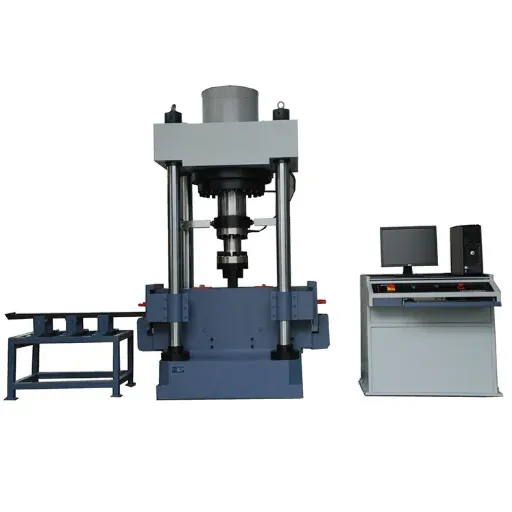
Assessing Your Specific Testing Needs
Step-by-Step Assessment Process:
- Material Analysis: Identify types and properties of materials to be tested
- Standards Review: Determine required international or regional testing standards
- Usage Frequency: Consider how often the machine will be used
- Automation Level: Decide between manual and automated operations
- Budget Planning: Balance cost with long-term value and performance
When selecting a bending testing machine, the first thing to do is to clearly define your testing requirements. Consider the materials that you will be testing and the properties, such as flexibility or durability, to be evaluated. Knowing the type and size of materials will enable you to know the capacity of the machine and whether it can be used for your testing activities.
Following this, review the testing standards that you have to follow, since these will determine what features your machine should have. Certain industries may follow certain international or regional standards for the purpose of ensuring uniformity and reliability of the test results. Make sure that the machine can support these standards for the sake of compliance and accuracy of test results in your process.
More factors to consider include the frequency of use of the testing machine, the level of automation desired, and cost limits. If the machine will be frequently used, priority should be given to how durable and easy to operate it is. Automation can allow for high-volume testing to be carried out more efficiently and with less human error, versus manual manipulation. So these considerations must be balanced to end with the ideal making, right bending testing machine that fulfills your needs within long-term value and performance.
Budget Considerations When Choosing a Testing Machine
| Cost Factor | Initial Investment | Long-term Value |
|---|---|---|
| Basic Machine | Lower upfront cost | May require frequent repairs |
| Premium Machine | Higher initial investment | Reduced downtime & maintenance |
| Customizable Options | Spread costs over time | Future-proof investment |
When selecting a bending testing machine, one must consider whether the budget suffices for the testing. Start by determining the scope of your testing, such as material types, load capacities, and frequency of use. Usually, machines for higher loads or specific material costs more; therefore, deciding which feature suits your application most is critical. Doing this prevents unnecessary expenditure on features that the application does not have to do with.
Finally, consider the tradeoff between upfront costs and long-term value. Sometimes, buying a less expensive machine may seem like saving up-front costs. However, since it may fail to possess the durability to withstand the test of time or it may require too frequent repairs, historically speaking, spending less upfront usually results in operational costs far exceeding the price of a higher-quality machine. A really good machine that is sturdy and reliable will merely reduce downtime and will serve a user for a longer period, making it all the more worthwhile on investment.
In the last step, look for machines that offer customizable settings to support testing scenarios of both the present and future. The flexibility of design enables one to add, for example, advanced features or automation further down the line with their associated costs spread over time, saving them from shelling out for a new machine worth more than its parent by the time their testing requirements change. The proper balance between lower cost, durability, and adaptability will help you pick the suitable bending testing machine that will give you the level of performance you desire within your price range.
Consultation and Support from Manufacturers
Pre-Purchase Consultation
Expert guidance on needs assessment and machine selection
Technical Support
Installation, maintenance, and troubleshooting assistance
Training & Resources
Operator training and safety protocol instruction
One of the most significant aspects of purchasing a bending test machine is to do thorough consultation with manufacturers for a well-informed purchase. Reputable manufacturers usually offer precisely good advice to help customers evaluate their own needs, whether it’s for the use of test apparatuses, material types, or expected workload. This enables you to stand with the option that can fulfill its performance requirements nearly without over-allocating funds in it.
Certainly, they offer considerable technical support during the purchase and even afterward. From fit-out, setting up, and starting up to routine preventive maintenance, the technical expertise of the manufacturers assures the best performance and the longest life of your machines. Going through the manufacturer’s support team would get you help on solving any operational troubles, either updates to the software so that your downtime is minimal and productive time is maximized. Good customer support makes a big difference; it will make or break the overall user experience and satisfaction with the equipment.
Moreover, manufacturers usually provide training or resources to guarantee correct use of the bending testing machines. These resources may include instructions on the safety protocols in using the machines, how to operate the software, or even how to perform an actual, precise test-one way or another, they all help operators to unlock the eventual power possible in the machine. Partnering with a manufacturer that understands the customer’s needs and stands behind the customer’s purchase can add considerable value to the investment gain, thus ensuring that testing proceeds smoothly and profitably in the long run.
Frequently Asked Questions (FAQ)
Q: What are the primary types of bending testing machines?
A: The bending testing machines may be 3 or 4-point bend test machines. These machines are used to test the resistance of different materials, composites, and metals to bending under specified loading conditions. They certified the different standards internationally and also assist in examining the mechanical properties of materials.
Q: How does a bending test work?
A: The bending test works by applying a load to the center of a test specimen supported at each end. The deflection at failure and failure point is measured in order to determine flexural strength and other mechanical properties. This test method may also be carried out using a bending testing machine coupled with a sophisticated testing software for data analysis and interpretation.
Q: How much do bending testing machines cost?
A: The bending testing machine price varies as per the type of machine, features, and respective manufacturer. Basic machines usually start somewhere in thousands, while the most advanced universal testing machine at the highest force capacity and with more capabilities for other forms of testing will be priced quite highly.
Q: What manufacturers provide quality bending testing machines?
A: Several manufacturers are recognized in the industry for their quality bending testing machines. Some of the leading bending testing machine manufacturers include Instron and other specialized material testing machine providers. These manufacturers offer a range of machines suitable for various testing applications.
Q: What materials can be tested using bending testing machines?
A: Bending testing machines can be made to test almost any material with slight variation: metal, plastic, composite material, textile, and so forth. These machines are versatile, permitting the bending of raw materials and finished products to ensure they conform to industry standards.
Q: Can a couple bending testing machines do any other test?
A: Very often, bending testing systems are designed to perform other tests: tensile, compression, fatigue, etc. Very often, these machines are used with extensometers to analyze in more detail the behavior of specimens under load.
Q: What is more important: the 3-point or 4-point bend test?
A: Loads are applied to the center of the specimen supported at both ends in a 3-point bend setup, ideal for the evaluation of flexural strength. The 4-point bending method, however, uses loads at two points, giving a more uniform stress distribution. Selection between these tests depends on the material properties under examination.
Q: I am searching for the right bending testing machine; how do I go about that?
A: To find your bending testing machine, you need to consider the test applications required, such as the kinds of materials to be tested and the force range required. You can search for different manufacturers and then select the most cost-effective testing whose application fits your interests. Then you can opt to consult with someone knowledgeable from that industry.
References
-
Flexural Testing Machine, 230V 50/60Hz, 3ph – Provides specific product details and pricing for flexural testing machines.
-
Bending Testing Machine Price on Alibaba – Lists a variety of bending testing machines with price ranges for different applications.
-
Steel Bar Bending Testing Machine – Features hydraulic bending and re-bending testing machines with FOB pricing.
-
China Bending Testing Machine Manufacturers – Highlights manufacturers and suppliers of bending testing machines, including price consultation options.

